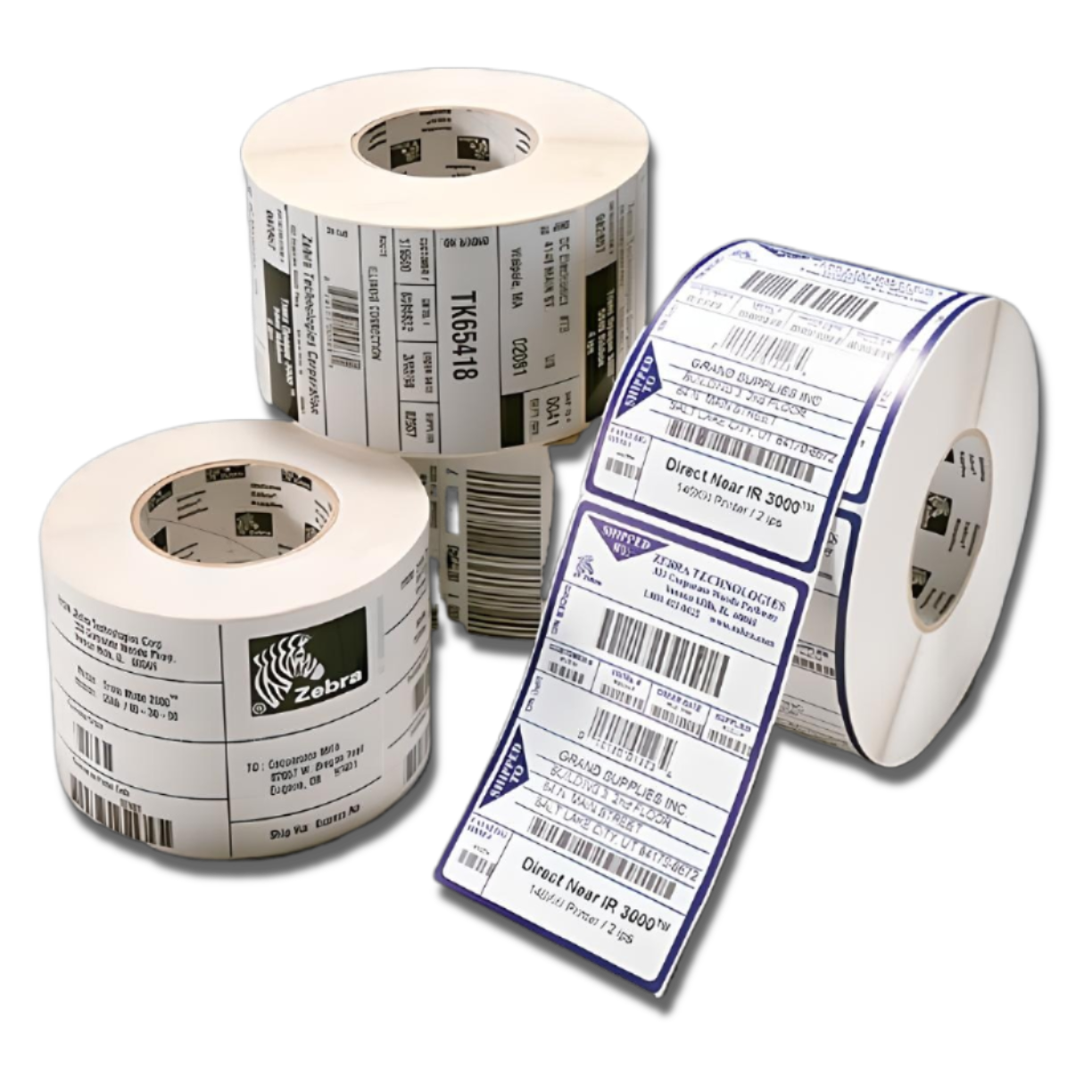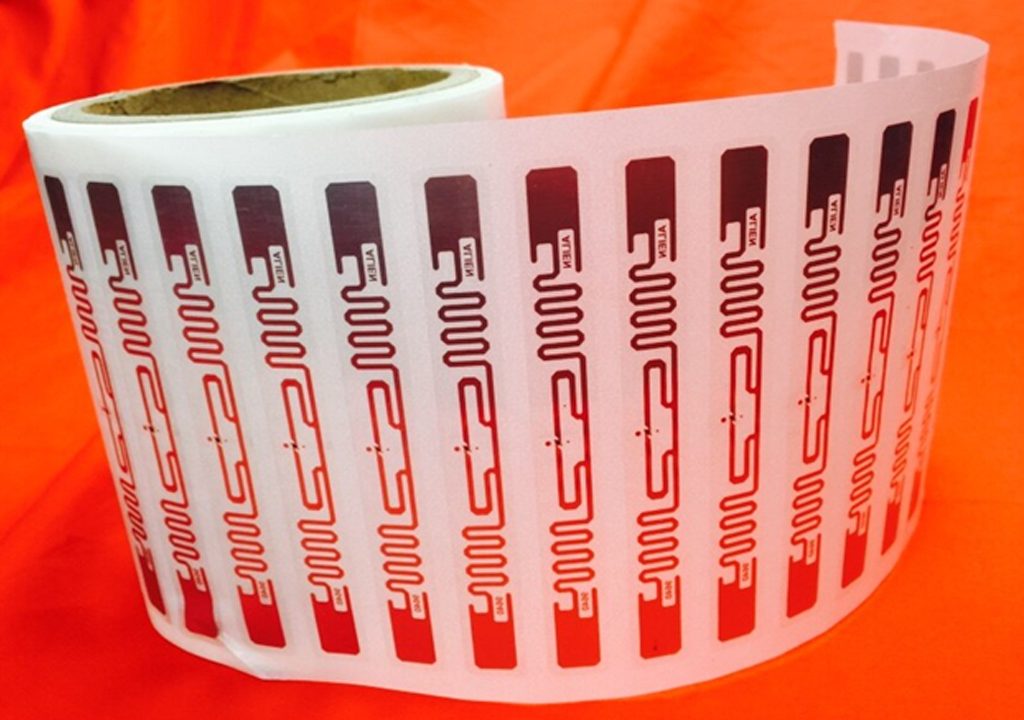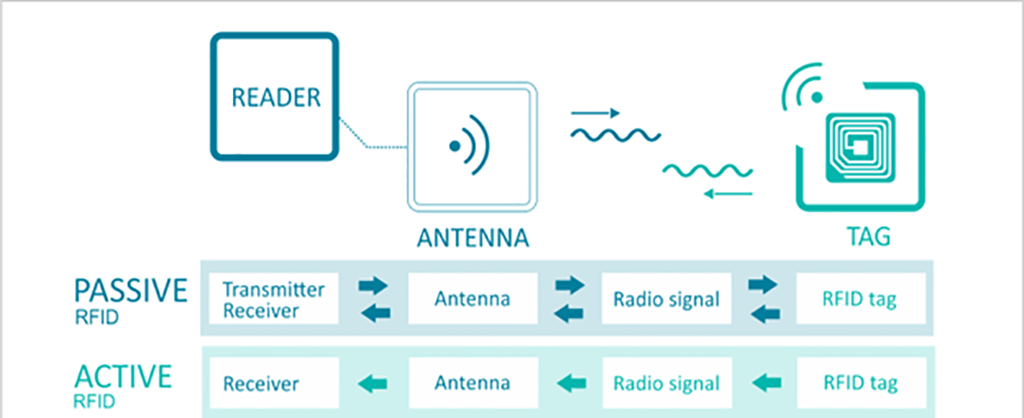
RFID tags are the foundational element of any RFID system. But how are they built, how do they work, and how can businesses effectively apply RFID technology?

What is an RFID Tag?
RFID (Radio Frequency Identification) tags are tracking devices that use radio frequency waves to locate, identify, monitor, and communicate with objects or people. Essentially, RFID tags are smart labels capable of storing a wide range of information—from serial numbers to brief descriptions, and even data sheets. Some RFID tags feature cryptographic security to support advanced verification and authentication processes.
RFID tags are typically classified by their radio frequency: Low Frequency (LF), High Frequency (HF), and Ultra-High Frequency (UHF). Thanks to their ability to operate in challenging conditions—such as through concrete, ice, or snow—RFID tags are widely adopted in environments where barcodes and other technologies fall short.
Components of an RFID Tag
A typical RFID tag consists of three main components: the chip, antenna, and substrate.
- RFID chip: This is an integrated circuit that contains memory and a microprocessor. For passive RFID tags, the chip receives energy from the RFID reader’s antenna. In contrast, active RFID tags use an internal battery to power the chip.
- Antenna: Connected to the chip, the antenna is often the largest component on an RFID label. Made of conductive materials, it is responsible for receiving data, reflecting, or transmitting radio signals depending on the tag type. In passive tags, the antenna reflects the signal and captures radio wave energy to power the chip. In active tags, the antenna transmits signals back to the system.
- Substrate: Usually made of a durable polymer or plastic, the substrate binds the components together and protects the tag in various environmental conditions.
In harsher settings, RFID tags may be enclosed in protective casings. Some tags also include specialized components—like sensors or signal transmitters—especially in active RFID models.

Types of RFID Tags
RFID tags can be classified based on frequency or by how they interact with the reader.
I. Classification by Frequency
1. Low-frequency RFID (LF)
Operating between 30KHz and 300KHz (commonly at 125KHz), LF tags offer a read range of up to 10 cm. While not particularly fast in data transfer, they’re less susceptible to interference from metal or liquid, making them ideal for livestock tracking and animal identification.
2. High-frequency RFID (HF)
Functioning between 3MHz and 30MHz (typically at 13.56MHz), HF tags have a read range from 10 cm to 1 meter. With moderate sensitivity and susceptibility to interference, they are widely used in payment systems and data transmission.
3. Ultra-high-frequency RFID (UHF)
These tags operate from 300MHz to 3GHz, often within the 860–960MHz range as per UHF Gen 2 standards. UHF tags can be read from distances up to 12 meters. They are more cost-effective to produce and offer superior transmission speed compared to LF and HF tags. UHF tags are widely used in inventory management, asset tracking, and wireless communication device configuration.
II. Classification by Communication Method

1. Active RFID tags
System components:
- RFID reader (Interrogator)
- RFID antenna
- Active RFID tag
Tag components:
- Internal antenna
- Microchip or integrated circuit (IC)
- Internal power source (battery)
With onboard batteries, active RFID tags support extended read ranges and higher memory capacity. Battery lifespan typically ranges from 3 to 5 years.
Types of active RFID tags:
- Transponder: Activates when it receives a signal from the reader. Efficient for conserving battery life when outside the reader’s range. Common in toll collection and secure access systems.
- Beacon: Broadcasts signals at fixed intervals (every 3–5 seconds) without waiting for a reader prompt. Frequently used in the oil & gas industry, mining, and retail asset tracking.
Due to their built-in batteries and durable enclosures, active tags are larger than passive ones. Some models also include environmental sensors for tracking metrics like humidity and temperature.
Read range:
Active RFID tags can transmit signals over hundreds of meters. However, to conserve power, they can be configured for shorter ranges—typically up to 100 meters.
Advantages:
- Extremely long read range
- Integrates easily with GPS and sensors
- Rugged and weather-resistant design
2. Passive RFID Tags

System Components:
- RFID reader (Interrogator)
- RFID antenna
- Passive RFID tag
Tag components:
- Internal antenna
- Microchip or IC
- No internal power source
How it works:
Passive tags rely entirely on the RFID reader for power. The reader emits an RF signal, which the tag’s antenna converts into energy to power the chip. Once activated, the chip sends a return signal to the reader.
Read range:
Passive tags support all frequency ranges (LF, HF, UHF) but have a limited read range—typically no more than 10 meters.
Types of passive RFID tags:
- Inlays: Available as dry or wet inlays. Wet inlays come with adhesive backing, while dry inlays require external adhesives to attach to surfaces.
- Hard tags: Built from materials like plastic, metal, ceramic, or rubber, hard tags are more durable and suited for harsh conditions.









